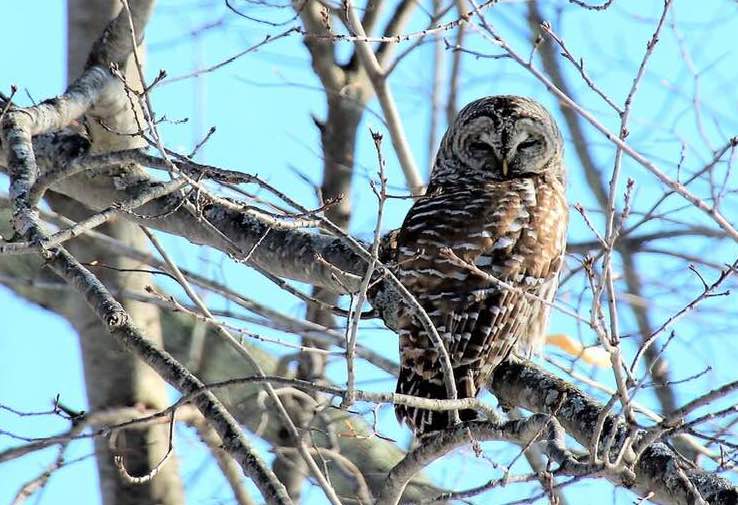ALFRED — Whether you’re in Alfred or Ellsworth, Lincoln or Old Orchard Beach, you might want to keep a sharp eye toward the tree line, or around your bird feeder.
It seems that barred owls, those creatures whose call sounds like “who cooks for you,” are being seen in many parts of Maine in recent weeks.
Sightings are popping up all over, and those armed with a camera or a cellphone have taken to posting their pictures on social media.
“I finally saw a barred owl in York today,” said one woman.
“I finally saw a barred owl in real life,” said another, posting a photo.
Still another woman posted a photo of a barred owl that appeared to be sleeping. The bird had been in the yard of her Scarborough home for several days. “It has been fun to have him here,” she said.
So are there more barred owls around than usual this year?
“This is definitely an exceptional year for barred owls,” said Douglas Hitchcox, a naturalist at Maine Audubon. “The great question is what is causing it.”
Hitchcox said there are a few factors at play – including high acorn production a couple of years ago that led to a boom in the squirrel population.
“Squirrels are a great food source for barred owls,” he said, and last year’s barred owl nesting season was the most successful in decades. “That’s probably what spurred the irruption right now.”
Barred owls seen around bird feeders are looking for food, like mice, or again, squirrels. They go where the food is, Hitchcox said.
Both Hitchcox and wildlife photographer Robin R. Robinson urge a measured approach when it comes to photographing barred owls.
Robinson, a birder for 30 years and administrator of the Maine Birds Facebook page, believes there have been more sightings this year.
She suggested photographers keep a comfortable distance – and not get too close.
“We’ve all done it, birders, people in general, photographers, when we see something profound and amazing we want more of it and to share that experience with others, so we encroach,” Robinson said. “Be in touch with those sort of feelings and keep them in check. If you feel like ‘this is amazing I can get this close,’ you probably shouldn’t be. For the most part, if a wildlife subject turns to you, you should probably be backing off.”
“If the bird is looking at you instead of underneath the bird feeder, that’s when I say watch the bird, take the picture and back up,” Hitchcox said.
Tammy Wells can be contacted at 780-9016 or at:
twells@journaltribune.com.
Send questions/comments to the editors.



Success. Please wait for the page to reload. If the page does not reload within 5 seconds, please refresh the page.
Enter your email and password to access comments.
Hi, to comment on stories you must . This profile is in addition to your subscription and website login.
Already have a commenting profile? .
Invalid username/password.
Please check your email to confirm and complete your registration.
Only subscribers are eligible to post comments. Please subscribe or login first for digital access. Here’s why.
Use the form below to reset your password. When you've submitted your account email, we will send an email with a reset code.